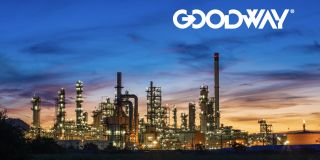A message from Goodway Technologies
Optimizing Maintenance Strategies in Power Generation: Embracing Predictive and Preventive Approaches

A message from Goodway Technologies
Optimizing Maintenance Strategies in Power Generation: Embracing Predictive and Preventive Approaches
Fans of the popular games Portal and Portal II will get a kick out of this one-or just fans of evil and corrupt artificial intelligences-or just fans of nuclear fission, fusion, and astronomy.
Researchers at the Idaho National Laboratory have demonstrated realistic full-core predictive modeling of a commercial nuclear reactor over multiple years of use. The simulation platform is named MOOSE (Multiphysics Object Oriented Simulation Environment).
Researchers at the National Ignition Facility in California announced this week that they had achieved a major milestone on the path toward nuclear fusion as an energy source, as described in a paper published in the science journal Nature. For the first time, the energy produced in a nuclear fusion reaction in a confined hydrogen fuel exceeded the energy put in to start the reaction. Science reporter Gautam Naik explains at the Wall Street Journal:
The American Nuclear Society will welcome delegates from around the world to Chicago this August for the 8th International Conference on Isotopes (8ICI). It will be the first time that this prestigious conference is hosted in the United States.
In honor of the Seattle Seahawks' convincing victory in the Super Bowl just a few short days ago, today's Nuclear Matinee videos come straight from the great state of Washington, home to Energy Northwest's 1,170-megawatt Columbia Generating Station-which, incidentally, produces enough electricity to power a city the size of Seattle.
In today's Nuclear Matinee, take a trip inside a nuclear reactor core with Jem Stansfield and the BBC. Jem explores a never-used reactor core at the Zwentendorf nuclear power plant in Austria to explain, in the most straightforward of terms, how a nuclear power station works.
A nuclear power station contributes a lot more in benefits to a community and region than just massive amounts of 24/7 electricity generation-although it should be noted that, in the case of Seabrook Station alone, 42 percent of New Hampshire's entire electricity generation comes from this single power plant. Amazing. See this excellent post at NEI Nuclear Notes for more on Seabrook's "bigger picture," and this story for more on regional economic benefits in particular.
Ha! Words don't do justice - just click 'play,' faithful Matinee viewers, and enjoy.
Interview by Katy Huff
Having a few days ago caught up with the latest milestones in construction of new nuclear units at Plant Vogtle in Georgia, let us take a look at the latest history in the making at the construction site of units 2 and 3 of the Virgil C. Summer Nuclear Generating Station in South Carolina - and in the local community surrounding one of the largest construction projects in the state's history. Construction of two new Westinghouse AP1000 reactors officially began in March 2013 and the reactors are planned to be online in 2018.
It's been more than two years since Vogtle Units 3 and 4 began to rise from the landscape near Waynesboro, Georgia-though construction officially began just last March with pouring of the Unit 3 basemat concrete, and a few months ago in November with the Unit 4 basemat. Turbine buildings, cooling towers, AP1000 reactor operator training... 2013 saw great strides toward the first new commercial nuclear power reactors in the United States in 30 years. Join host Joe Washington for a tour of the most recent milestones achieved in this amazing construction project.
Today's Nuclear Cafe Matinee takes faithful viewers "across the pond"-well, at least if one is situated in North America-to chat with Hinkley Point B Station Director Mike Harrison in southwest England.
Editor's note: December 11 marked the 59th anniversary of the founding of the American Nuclear Society. After posting a note on ANS Facebook with an image of the ANS 1st annual meeting program cover, the thought struck... "Well, perhaps some readers would be interested in perusing the 1954 meeting program itself." So, presenting the ANS 1st annual meeting technical program-along with accompanying introductory letter at bottom of post. Click images or here to access (enlargeable!) program .pdf
News out of Fukushima-Daiichi this week is encouraging: TEPCO successfully transferred the first batch of fuel rod assemblies from the reactor unit No. 4 spent fuel pool to a common fuel pool building offering longer-term stable storage conditions. Completing the process for the more than 1,000 fuel rod assemblies that remain at No. 4 is projected to take a year, and will be a first major step toward decommissioning of the site.
By Rita Patel and Suzy Baker [originally published at Nuclear Undone]
An odd sidelight of my years in the Navy as a Reactor Operator was the time that we were called upon to perform work on the preserved ships at Patriot's Point Naval Museum in Charleston, South Carolina. This interlude allowed me to become intimately familiar with a ship that was totally out of place at that anchorage of the aged: the nuclear powered commercial ship N.S. Savannah.
The ANS President's Reception at the 2013 Winter Meeting on Sunday, November 10 was a chance for old friends to reunite and new friends to meet with their colleagues and ANS elected leaders.
Join the conversation today and especially during the premiere, on twitter at #pandoraspromise
The American Nuclear Society's Operations and Power Division will host the 2nd ANS Small Modular Reactor Conference during the ANS Winter Meeting on November 12-14, 2013, in Washington, DC. The Opening Plenary for the Conference will begin on Tuesday, November 12, at 8:00 a.m. at the Omni Shoreham Hotel.